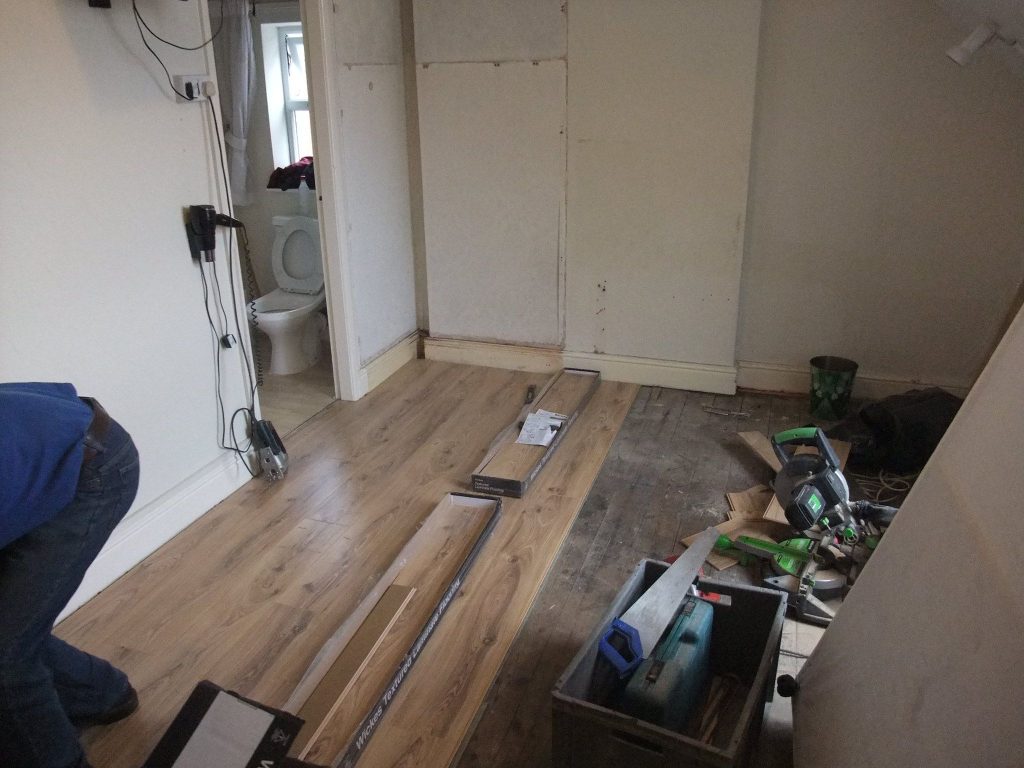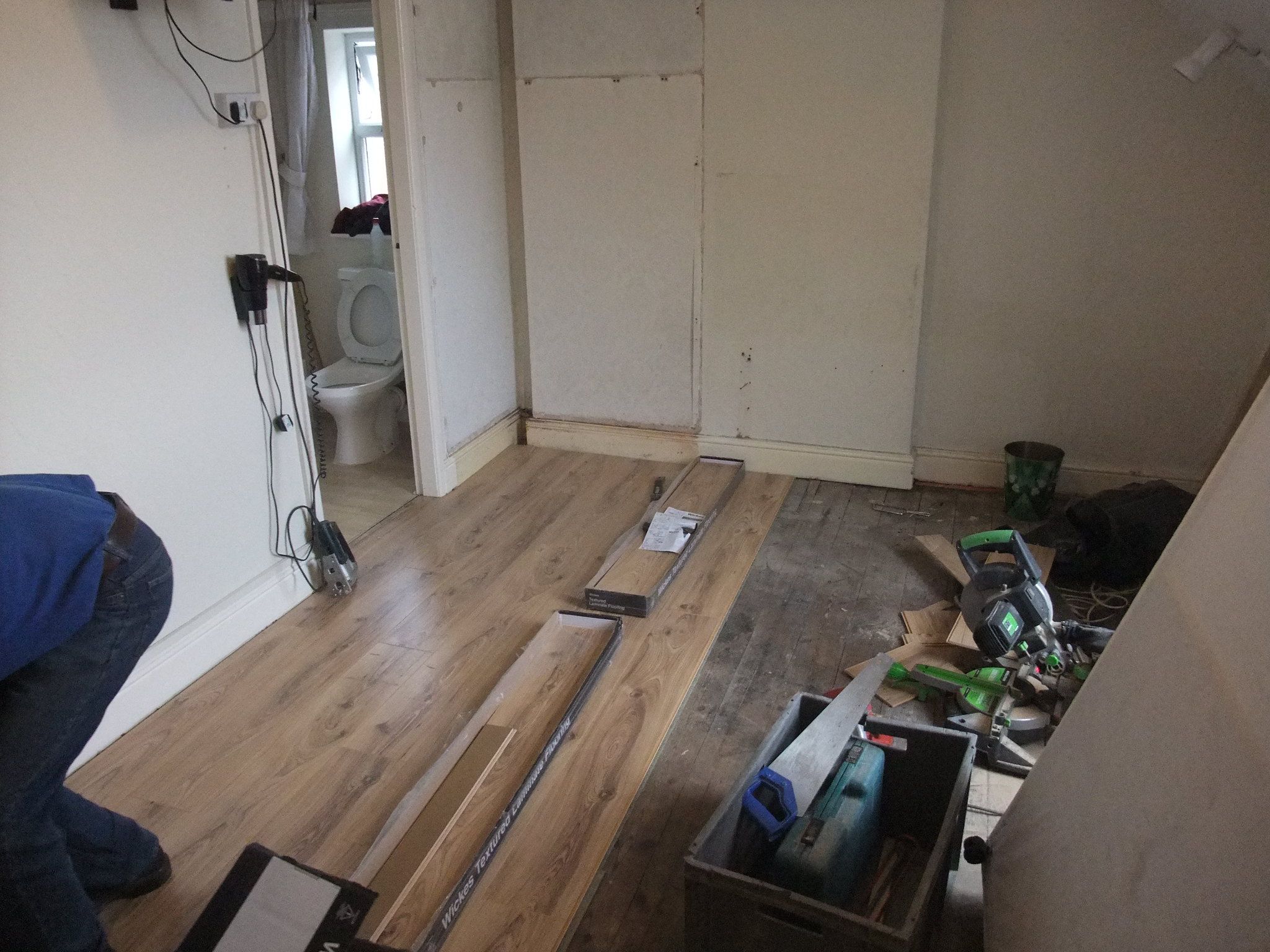Ceramic tile is one of the most durable and easy to care for flooring options there is. Nonetheless, ceramic tile can become damaged, making it desirable to change the flooring out. I used to own a house where they had used ceramic wall tile designed for use in a bathroom shower, as floor tile. Because the tile was thinner and had a thinner glazed surface, the tile had become chipped in a number of places, before I bought the home.
Many people put up with a damaged ceramic tile floor, rather than replacing or covering it, because of the huge amount of work required to remove the existing tile floor and then level the subfloor, before installing new flooring. But it may not be necessary to remove that old floor. There are a number of flooring options that can be installed directly over the old ceramic floor.
The big consideration to be looked at, before installing new flooring over that ceramic tile, is the condition of the floor. Ceramic tiles themselves are generally fairly smooth and level and the overall floor should be too. When properly installed, the grout between the tile should be 1/16” below the surface of the tile. It needs to be lower, because the grout is softer than the tile and needs the protect it receives from the tile, in order to keep it from being worn from foot traffic.
However, if the original tile floor was not installed properly, the grout can be lower than that 1/16”, making the floor uneven. It’s also possible to have tiles that are high in one corner, especially if the subflooring beneath that tile wasn’t smooth and leveled before the tile was installed. While some floor coverings can handle as much as ¼” of unevenness in the existing floor, the more level the tile surface is before installing the new floor, the better the new floor will come out.
Another thing that will need to be done is to replace any damaged tiles. This doesn’t mean replacing tiles with small chips in the glazing; but rather replacing tiles that have corner missing or where the tile is loose. If the floor is going to be leveled, smaller missing corners can be filled in that way; but if a large corner is missing or the tile is loose, it should be replaced.
Leveling a Tile Floor
The first part of leveling any tile floor is cleaning it thoroughly. This is necessary for installing the new floor as well, as whatever adhesive is used on the floor needs a clean surface. Once the floor is clean and dry, the existing grout should be primed with an acrylic primer made for the purpose. This is not a paint primer, but rather one designed to work with the leveling compound. The primer only needs to be applied to the grout, not the surface of the tile.
There are two ways of leveling the floor. The first is to use a leveling compound, sometimes called a “floor patch,” which usually comes pre-mixed in a plastic bucket. It is applied as a skim coat with a flat, untoothed trowel. The second is to use self-leveling underlayment, which needs to be mixed with water and then is poured onto the floor, where it is spread out with a flat, untoothed trowel.
The main difference between the two of these is that the pre-mix is only put where needed, which basically means only applying it over the area around the seams. On the other hand, the leveling compound is spread over the entire floor, covering the tile entirely. Even so, it is faster to work with, which can be important when a large area needs to be dealt with.
In both cases, the material used to level and smooth out the tile floor should be allowed to cure fully. Then the floor should be gone over with a scraper, removing any protrusions sticking up before applying the new floor covering. Generally speaking, the self-leveler will deal with these while it is curing, but the pre-mix won’t.

What Can Go On that Leveled Floor?
Please note that leveling or smoothing of the tile will not be necessary in all cases. It is important to check the specific floor covering being considered, to find out how much unevenness that particular floor covering can withstand. While a smooth, level subfloor is always best, most can handle some unevenness without it causing any harm to the flooring or discomfort while walking on it.
Pretty much any floor covering that can be installed with adhesives and without nails can be installed over concrete floors. Tile is difficult to impossible to nail into, so the only place where nails can be used is in the grout lines. That’s important for such things as metal carpet edging, if there’s somewhere in the project where the tile will be left exposed, such as at a doorway. For the rest, installing over ceramic tile is accomplished with adhesives, rather than fasteners.
Floor covering that can be installed over ceramic tile includes:
- Cork flooring
- Laminate flooring
- Hardwood flooring (requires an underlayment)
- Carpeting (heavy padding is recommended)
- Vinyl plank
- Carpet squares
- Linoleum
- Vinyl tile flooring
Please note that the manufacturers of all these floor covering products caution about the grout lines on their websites. If grout lines are too deep, they will affect the finished appearance of the new floor covering, “printing” through it. That’s why it is often recommended to level the tile floor, before installing new floor covering.
Any floor covering that is installed over ceramic tile needs to be installed with an adhesive mastic, specific to the type of floor covering being installed. As installation of these floor covering options over concrete floors is common, special adhesives are not required.




